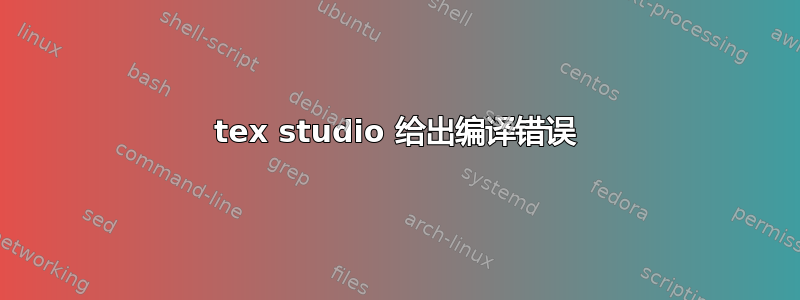
我对使用 LaTex 还很陌生,目前我正在尝试在我的文档中使用 longtable。
这是来自@Zarko 的代码文章:
\documentclass{article}
\usepackage[a5paper, margin=10mm]{geometry} % a6paper?
\usepackage{lipsum}
\usepackage{enumitem}
\newlist{tabenum}{enumerate}{1}% <-- defined new enumerate list
\setlist[tabenum]{nosep,
label*=\textbf{\alph*)},
wide,
before=\begin{minipage}[t]{\hsize},% <---
after=\end{minipage}}
\usepackage{newtxtext}
\usepackage{microtype}
\usepackage{xcolor}
\usepackage{tabularray}
\UseTblrLibrary{varwidth} % <===
\begin{document}
\begingroup
\SetTblrStyle{caption}{font=\footnotesize}
\SetTblrStyle{contfoot-text}{font=\footnotesize\itshape, fg=gray2}
\begin{longtblr}[
caption = {Long Long Long Tabular},
label = {tblr:test},
]{
hlines, vlines,
colspec = {c X[j]X[j]X[j] X[j]},
colsep = 3pt,
rowhead = 1,
rows = {font=\footnotesize},
row{1} = {font=\footnotesize\bfseries, m},
rowsep = 1pt,
measure = vbox,
}
{Pap. No.} & {Paper Title/\\Description}
& {What data sets\\ was it tested on}
& Methodology
& {Strengths and\\ Weaknesses}
\\
% table body
1 & HOTR: End-to-End Human-Object Interaction Detection with Transformers (2021)
& \begin{tabenum}
\item Tested on V-COCO and HICO-DET.
\item Achieved results that showed it was 5x faster than other models as of publication. See the table \ref{tab: tableStats}
\end{tabenum}
& The methodology used was to improve on the DETR paper \cite{HOI_DETR_basisofHOTR_carion_massa}. It used transformers and parallel interaction and instance query decoders. 1 shared encoder. Loss function that matches the predicted interactions with the ground truth (replacing post processing step) mechanisms of transformers makes the model exploit the contextual relationships between human and object and their interactions. This allows for higher-level scene understanding.
& The strength of this paper was that it's end-to-end and parallel HOI detector model. The model however performed worse in comparison to other models for areas like rare data.
\\
2 & Human-Object Interaction Detection: A Quick Survey and Examination of Methods (2020)
& \begin{tabenum}
\item A few datasets were used by the papers described in the survey, including the popular HICO-DET, MS-COCO and V-COCO.
\item Paper was methological in reviewing the various models in the HOI scene. The models were split into 2 categories - multi stream and graphical models. Of course some models are novel and don't fall under these explicitly (and weren't included in this survey) but most of them are under these categories.
\end{tabenum}
& Multi-stream models took into account the various elements that made up the scene. For example, there would be streams for the human, for the action and for the object. In piecing together the trio, the model is able to guess what is the HOI occuring in the scene. Graphical methods bounced off nodes in the graph to `strengthen` the relationship between a human and the object. At the end of the computations, the relationship with the strongest co-relation value would be chosen as the final guess for what the HOI in that scene was.
& This is a review so there is no explicit strength and weaknesses of the review paper. \\
3 & Parallel Detection for Efficient Video Analytics at the Edge (2021)
& This model was tested on only 2 video datasets - ADL-Rundle-6 and ETH-Sunnyday. It wasn't tested on conventional HOI datasets and used edge servers to run the detection in parallel in real-time.
& For the methodology, they made use of multi-model detection scheduler and the sequence synchronizer as the key components of the model. These 2 work hand in hand to allow parallel detection processing of numerous input video frames simultaneously. Concurrently, the temporal order of the detection processed frames, as per the original input stream video sequence is maintained.
& The strength is that this model is able to detect the HOI interactions very accurately in almost real-time without messing up the sequence of the video or sizeable lag. However the weakness is that this model is only tested on a couple of datasets. So the results obtained could be purely contextual or only applicable to these datasets. \\
4 & QAHOI: Query-Based Anchors for Human-Object Interaction Detection (2021)
& \begin{tabenum}
\item Take one year swap and run it with IM.
\item Take the same swap and run it without IM.
\end{tabenum}\medskip
\emph{Note}: Please use CVA closeout model in both cases.
& With IM graph should start higher, converging into without IM towards expiry.
& The same result can be implied from already run test cases. \\
5 & Swap with IM and without IM
& \begin{tabenum}
\item Take one year swap and run it with IM.
\item Take the same swap and run it without IM.
\end{tabenum}\medskip
\emph{Note}: Please use CVA closeout model in both cases.
& With IM graph should start higher, converging into without IM towards expiry. & The same result can be implied from already run test cases. \\
6 & Swap with IM and without IM
& \begin{tabenum}
\item Take one year swap and run it with IM.
\item Take the same swap and run it without IM.
\end{tabenum}\medskip
\emph{Note}: Please use CVA closeout model in both cases.
& With IM graph should start higher, converging into without IM towards expiry.
& The same result can be implied from already run test cases. \
\\
7 & Swap with IM and without IM
& \begin{tabenum}
\item Take one year swap and run it with IM.
\item Take the same swap and run it without IM. \end{tabenum}\medskip
\emph{Note}: Please use CVA closeout model in both cases.
& With IM graph should start higher, converging into without IM towards expiry.
& The same result can be implied from already run test cases.
\\
8 & Swap with IM and without IM
& \begin{tabenum}
\item Take one year swap and run it with IM.
\item Take the same swap and run it without IM. \end{tabenum}\medskip
\emph{Note}: Please use CVA closeout model in both cases.
& With IM graph should start higher, converging into without IM towards expiry.
& The same result can be implied from already run test cases.
\\
\end{longtblr}
\endgroup
\end{document}
然而,我不断收到红线和编译错误,但我似乎找不到原因 - 语法对我来说看起来是正确的:(
有人能帮忙建议一下吗?谢谢


